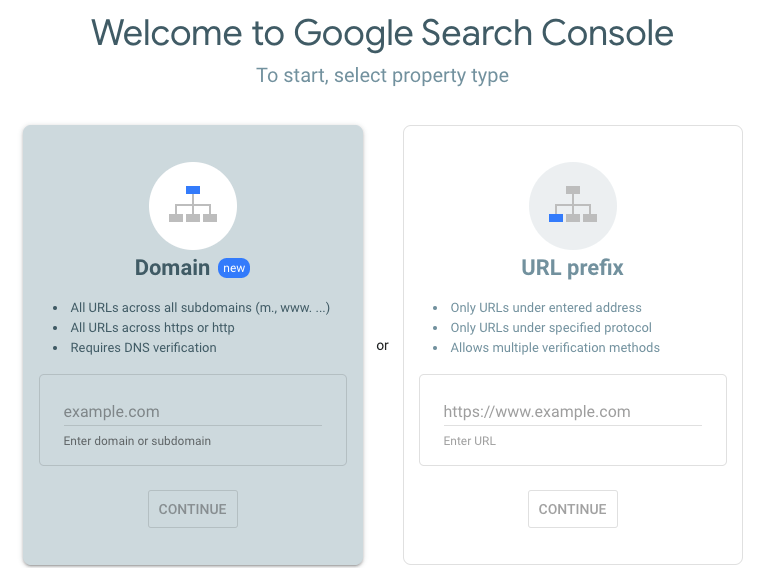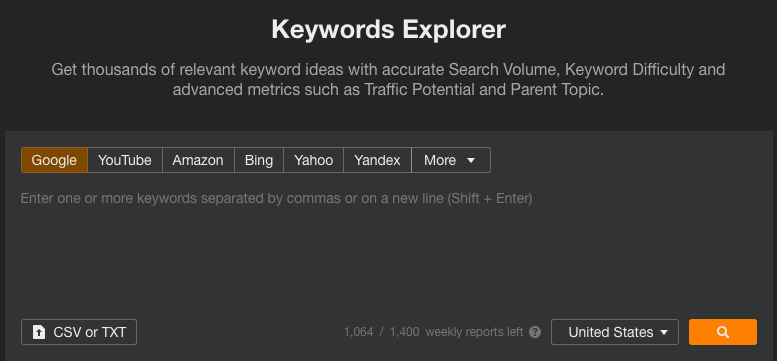How Keywords Drive SEO
-

Brian Kiprotich
- Blogs
-
 August 08 , 2023
August 08 , 2023 -
 12 min read
12 min read
My journey into the world of search engine optimisation (SEO) started with a curiosity about how search engines work. I wanted an answer to the question ‘How do search engines determine which sites to display in response to a user’s search?’ and I wanted to use this knowledge to optimise my clients’ websites for greater visibility. Little did I know that this venture would take me into the deep and fascinating realm of keywords, which play a vital role in the art of SEO.
In this blog post, I aim to share everything you need to know about keywords to optimise your site’s visibility. Let’s explore the process and techniques of effectively choosing, using, and tracking these SEO components.
What are keywords?

One term has popped up throughout my SEO journey more than any other: keywords. What exactly are they, and what is their significance in search optimisation?
Keywords are the words and phrases that internet users type into search engines when looking for information, services, products, or answers. These terms connect users to the content they’re seeking on the web. Keywords are part of the language internet users speak; therefore, my responsibility as a content creator is to understand and use these to communicate to the target audience accordingly.
How do keywords work?
Search engines like Google use complex algorithms to scan and index web pages. These algorithms look for relevant keywords in your content to understand what it’s about. It then uses this information to match a user’s query with the relevant content.
The magic happens when a user types a search query, or keywords, into a search engine. The search engine’s algorithm springs into action, diving into its extensive index of web pages to find the most relevant ones. It considers various factors in its quest, including the presence and placement of the search keywords in the indexed pages. Pages that contain the search keywords, especially in key areas like the title, headers, and throughout the content, are seen as more relevant to the query.
However, keyword matching isn’t the only factor the algorithm considers. Other factors, like the overall quality of the content, the credibility of the website, and the user-friendliness of the page, also come into play. These contribute to the algorithm’s assessment of a page’s relevance and quality.
Nonetheless, the role of keywords as the connection between a user’s search query and the content cannot be overstated. By strategically incorporating relevant keywords into your content and ensuring a strong alignment between user intent and page content, you can significantly improve your website’s chances of ranking higher in search engine results pages (SERPs) and attracting organic traffic.
Types of keywords
Understanding the various types of keywords is essential for developing an effective online presence. Each type serves specific purposes and should be used strategically to achieve your SEO goals. Let’s take a closer look at each type and their significance:
- Long-tail keywords
Long-tail keywords have consistently been a valuable asset in my SEO toolkit. These are longer, more specific phrases that searchers use when they’re closer to the point of purchase. While these keywords generally have lower search volume, they attract highly targeted traffic, often leading to higher conversion rates.
For instance, a user searching for ‘best noise-cancelling headphones for flights’ is likely further along the buying process than someone just searching for ‘headphones.’ By targeting this long-tail keyword, you can attract visitors who are more likely to make a purchase.
- Short-tail keywords
Short-tail keywords, also known as head terms or generic keywords, are usually one to three words long and have a high search volume. Although I find it challenging to rank for them because of their competitive nature, they’re still important components in content optimisation strategies.
For example, a keyword like ‘shoes’ is very broad and likely to have significant competition from many businesses. That being said, ranking for that short-tail keyword can be highly beneficial due to the high level of traffic it can potentially drive to your website.
- Competitive keywords
Competitive keywords, often synonymous with short-tail keywords, are terms many businesses try to rank for. They usually have a high search volume and a lot of competition. For instance, if you’re a tech company, you might find it challenging to rank for the competitive keyword ‘smartphone’ because many established companies in your industry are likely targeting it as well. The competition for such a keyword is tough, with well-known brands usually vying for top positions on SERPs.
- Non-competitive keywords
Non-competitive keywords are often overlooked gems in the world of SEO. These terms have lower search volume and therefore have less competition. While they might not drive as much traffic to your site as a competitive keyword, they can attract more targeted, higher-converting traffic.
Let’s say your business sells artisanal chocolate. You might have a better chance of ranking for a keyword like ‘handmade dark chocolate with hazelnuts’ than for a more competitive keyword like ‘chocolate.’ While the search volume for the former may be lower, the traffic it attracts could be of higher quality. The visitors who arrive at your site through these specific keywords are more likely to have a genuine interest in your products.
With all these types of keywords, it’s important to remember that the right mix for your content depends on your specific goals, audience, and industry. By understanding the different types of keywords and how to use them effectively, you can better position your content for SEO success.
How to research keywords

According to SEMrush’s database, there are over 24.9 billion keywords today, and the number will only keep rising. But I’ve been in the industry long enough to know that not all of them are beneficial for enhancing your SEO. So, how can you find a keyword or keyphrase that fits your strategy perfectly?
It all boils down to understanding your target audience. As an experienced professional, I always place myself in the shoes of my ideal users and consider the terms they’re likely to use when searching for information related to my clients’ websites.
One important step to achieving this is keyword research. It enables me to write blogs that resonate with my audience and rank well on search engines. Not only does this process improve visibility, but it also contributes to better conversion rates.
Here are the basics of getting started with keyword research:
- Use keyword tools
Keyword research often involves the use of various keyword tools. They can generate a wide range of relevant keyword suggestions, and they also provide valuable insights into relevant keywords, which can help inform your decision-making regarding your SEO strategy.
I’ve used several keyword research tools over the years. Here are the ones I found particularly helpful:
- Google Keyword Planner : This classic tool allows you to find keywords related to your business or industry and see how they might perform.
- SEMrush : This tool provides comprehensive keyword data, including volume, difficulty, and competitive density. It also gives insight into the keywords your competitors are targeting.
- Ahrefs : Known for its extensive backlink analysis features, Ahrefs also offers a powerful keyword research tool that provides keyword ideas and detailed metrics.
Their features and offerings may differ, so it’s important to take the time to study each tool before you commit to one. That way, you can select the one that best aligns with your requirements.
- Consider keyword difficulty
When conducting keyword research, it’s important to consider keyword difficulty, which is a metric that indicates how challenging it might be to rank for a particular keyword. Often abbreviated as KD, it takes into account the existing competition and then assigns scores ranging from 1 to 100. Terms on the lower end of the scale are generally easy to rank for, while those on the opposite end have greater competition.
Personally, I gravitate towards those with a score of around 30%, as they often offer decent search volume and reasonable competition – a healthy balance to strike.
- Consider keyword volume
Keyword volume is another important factor to consider when choosing keywords. It refers to the number of searches a particular term receives within a given time frame. According to Ahrefs, around 95% of keywords get 10 monthly searches at most. Most long-tail keywords fall in the 95% category, while the remaining 5% comprise short-tail terms. Both types have their own pros and cons, so I’ve learned to balance their placement in my content.
Although high-volume words are very competitive, they can bring significant traffic if you manage to rank for them. On the other hand, their low-volume counterparts can add up to substantial traffic and often convert better since they’re more specific.
How to use keywords in your content
Using keywords naturally is vital to the success of your SEO strategy. Effective placement can greatly help your content’s visibility and relevance.
Here are various sections you can place your keywords naturally and effectively:
- In title tags
A title tag is an HTML element that indicates the title of a webpage. It’s the headline you click on for a given result on a SERP, and it appears at the top of the browser tab when the page is opened.

The title tag is the first thing search engines and users see when they search your content. As such, they’re among the most critical places for keyword placement. Not only do they increase the relevance of your content for search engines, but having your primary keyword in the title tag increases the likelihood of users clicking on your webpage.
- In meta descriptions
A meta description is the snippet of information that appears under your title tag on the SERP. It’s a summary of the content on your web page.

Including your primary keyword here can be a positive relevancy signal to search engines and can also encourage users to click through to your page. As you can see in the example above, ‘meta description’ is the primary keyphrase, and it appears on both the title tag and the snippet.
- In headers
Headers (H1, H2, H3 tags, and so on) are useful for structuring and breaking up your content to improve readability. They’re also great places to include your keywords, as they provide crawlers with better context of what the webpage is about.
Personally, I always try to use the primary keyword in the H1 and incorporate secondary and long-tail keywords in the subheadings where possible.
- Throughout your content
Besides the strategic placements listed above, keywords should also appear naturally throughout your content. This shouldn’t be too difficult, and in fact, it should be a no-brainer if your chosen keyword is related to the main topic of your webpage.
However, it’s important to note that you should avoid overusing it unnaturally in your content. Keyword stuffing can lead to poor user experience, lower search engine rankings, and potential penalties. Focus on providing valuable, well-written content that aligns with the intent of your audience and use your keywords in a way that feels organic and enhances the overall quality of your content.
How to track your keyword performance
Monitoring keyword performance is crucial in SEO because it will help you understand if your optimisation strategies are working and where you need to make improvements. By analysing metrics such as search volume, rankings, click-through rate (CTR), and conversions associated with your keywords, you can get a better understanding of the performance of your SEO efforts. It’ll give you an overview of how well your keywords are resonating with your target audience, how visible your website is in search results, and how effectively it’s driving traffic and conversions.
Here are some of the best tools I rely on for tracking keyword performance:
- Google Search Console
Google Search Console is a free tool that provides valuable insights into how Google sees your website. It shows which keywords your site is ranking for, your average position in search results, and the number of clicks and impressions each keyword has received.

I find it particularly useful for identifying the keywords that drive traffic to my site and understanding how changes to my site or content impact my rankings.
- Google Analytics
While Google Analytics doesn’t show keyword data directly due to privacy reasons, it’s an invaluable tool for understanding how users interact with your site. It provides information on which pages are performing best, the user behaviour on those pages, and the source of your traffic.
Combining Google Analytics data with Search Console data can provide you with a more comprehensive picture of your keyword performance.
- Keywords Explorer by Ahrefs
Ahrefs’ Keyword Explorer is a paid SEO tool that’s excellent for tracking keyword performance. It provides comprehensive keyword data, including search volume, keyword difficulty, and ranking history.

What I find especially valuable in Keyword Explorer is its ability to identify the keywords my competitors are ranking for, which gives me ideas for new keywords to target.
- SEMrush
SEMrush is another paid SEO tool I use for more advanced keyword tracking. It shows keyword rankings over time, compares performance to competitors, and suggests new targeted keywords.
All these tools are pivotal in my SEO strategy, as they provide me with the data I need to make informed decisions and continuously refine my approach. SEO is a long-term game, and tracking keyword performance is a significant part of staying ahead and achieving success.
Takeaway
Keywords play a vital role in the world of digital marketing, as they form the foundation of a successful SEO strategy. However, you need to choose the right terms and strategically place them in your content to fully maximise their potential. That’s why every SEO project begins with choosing the right keywords.
This blog and the SEO resources shared above should be enough to get you started on your SEO journey.
Subscribe to Our Blog
Stay up to date with the latest marketing, sales, service tips and news.
Sign Up
"*" indicates required fields


